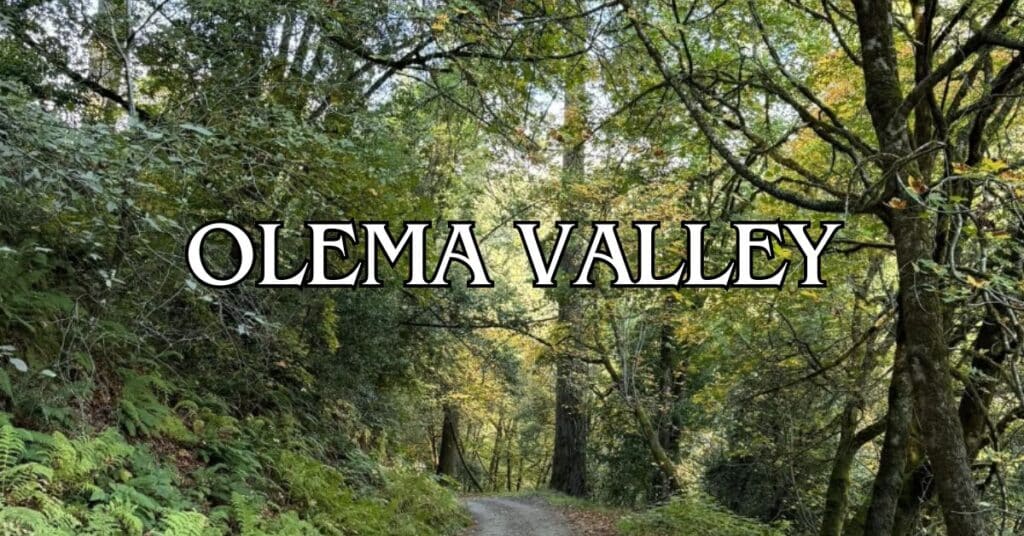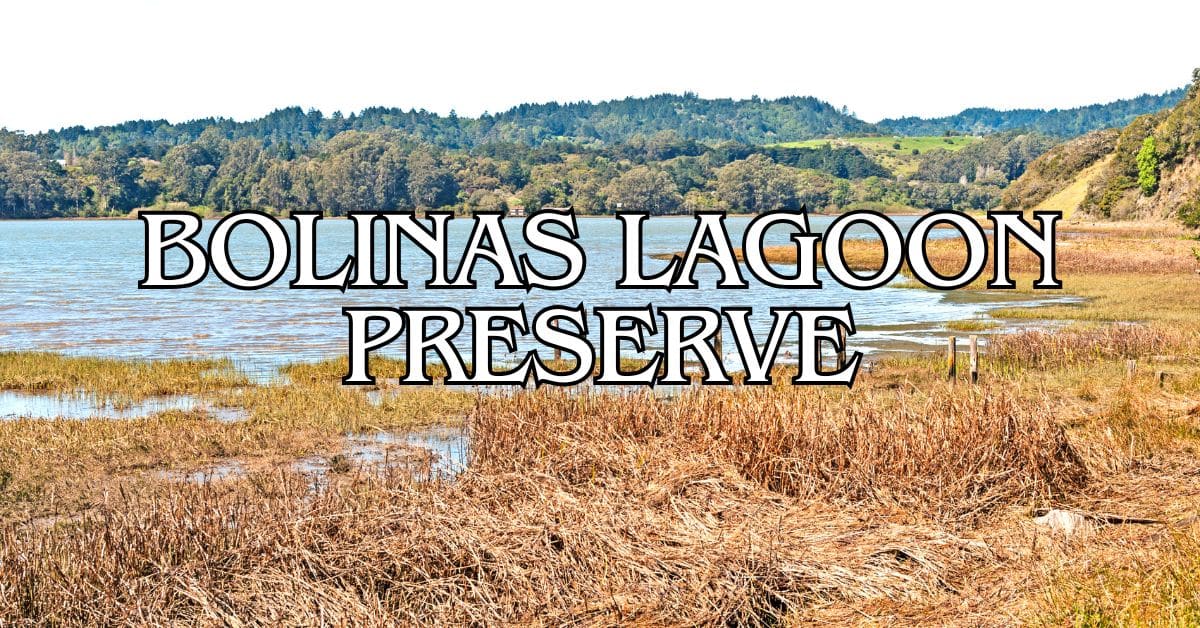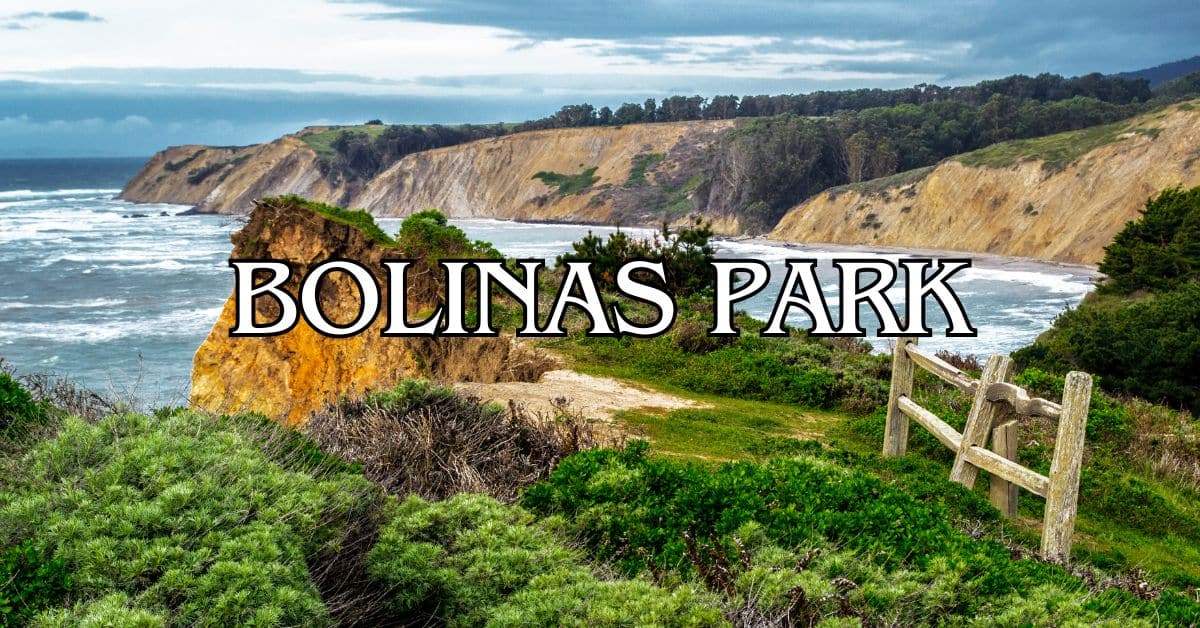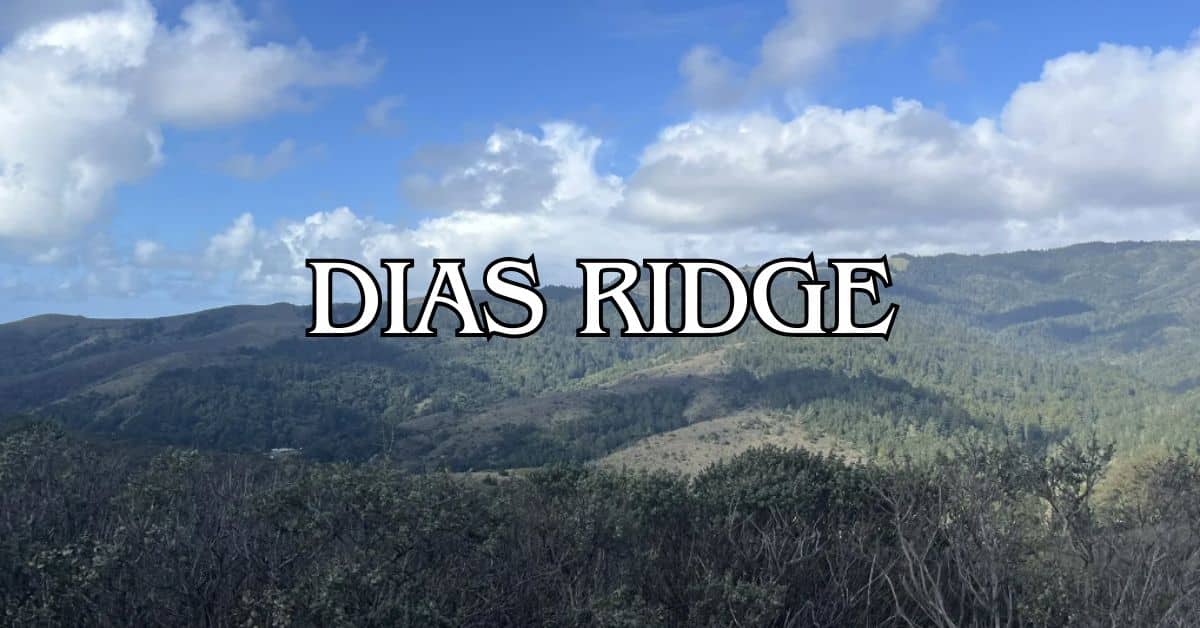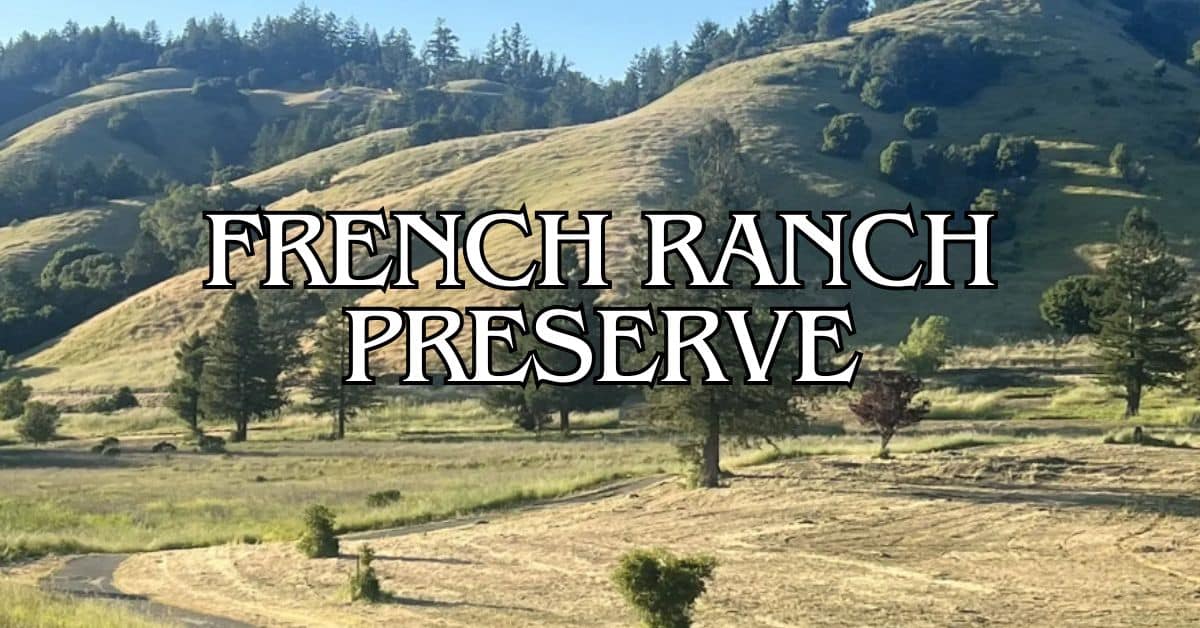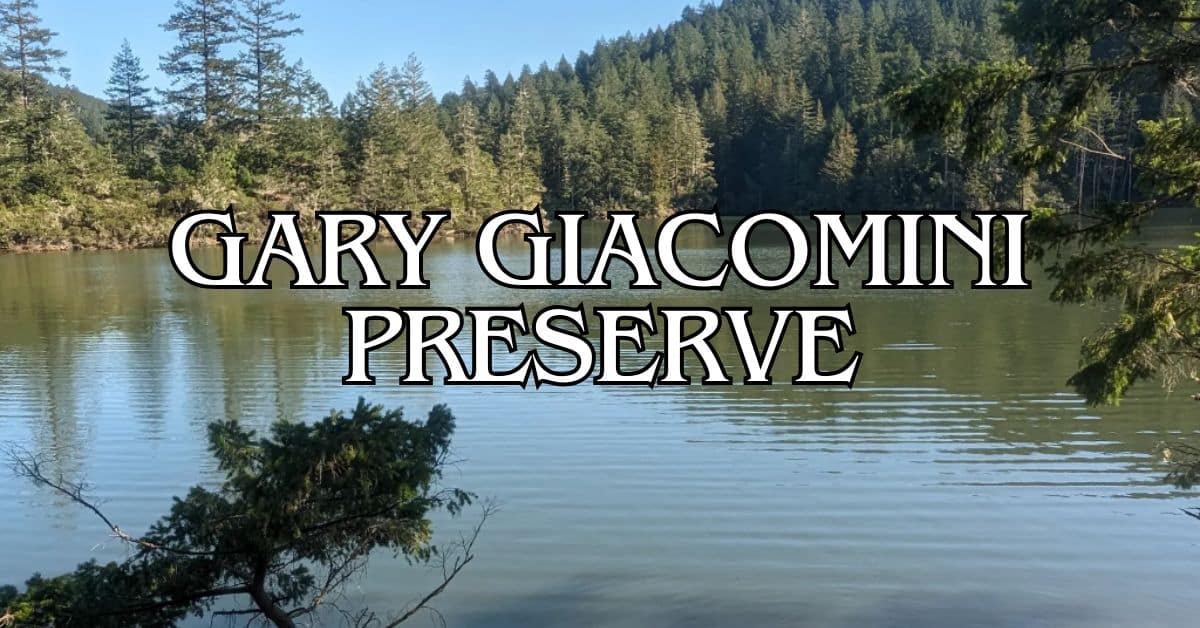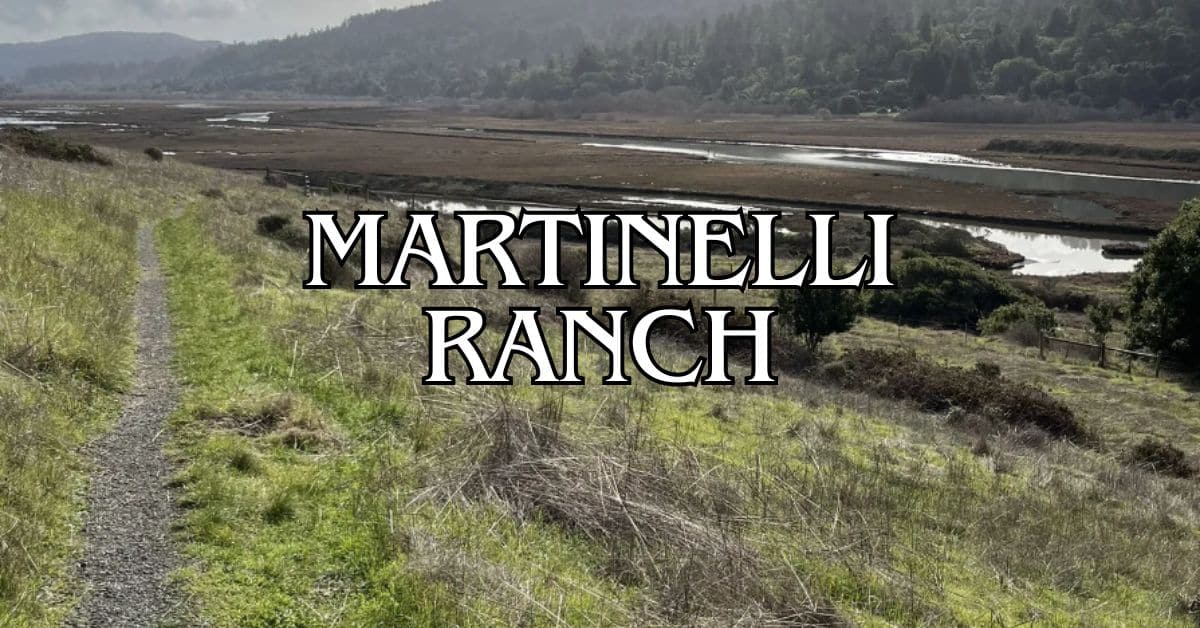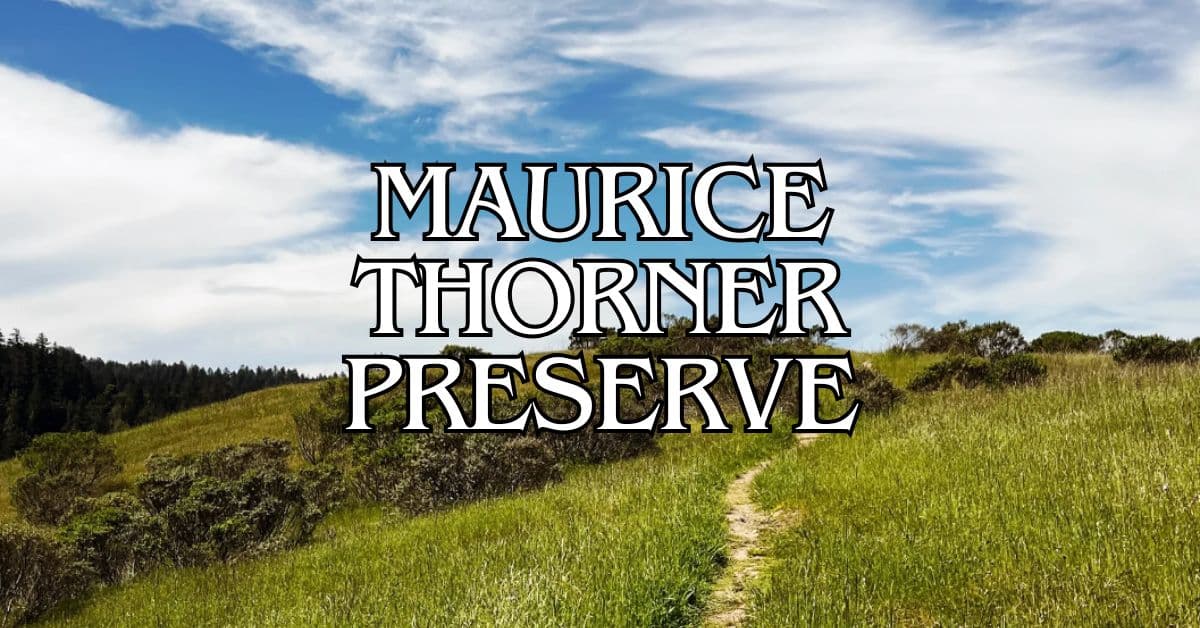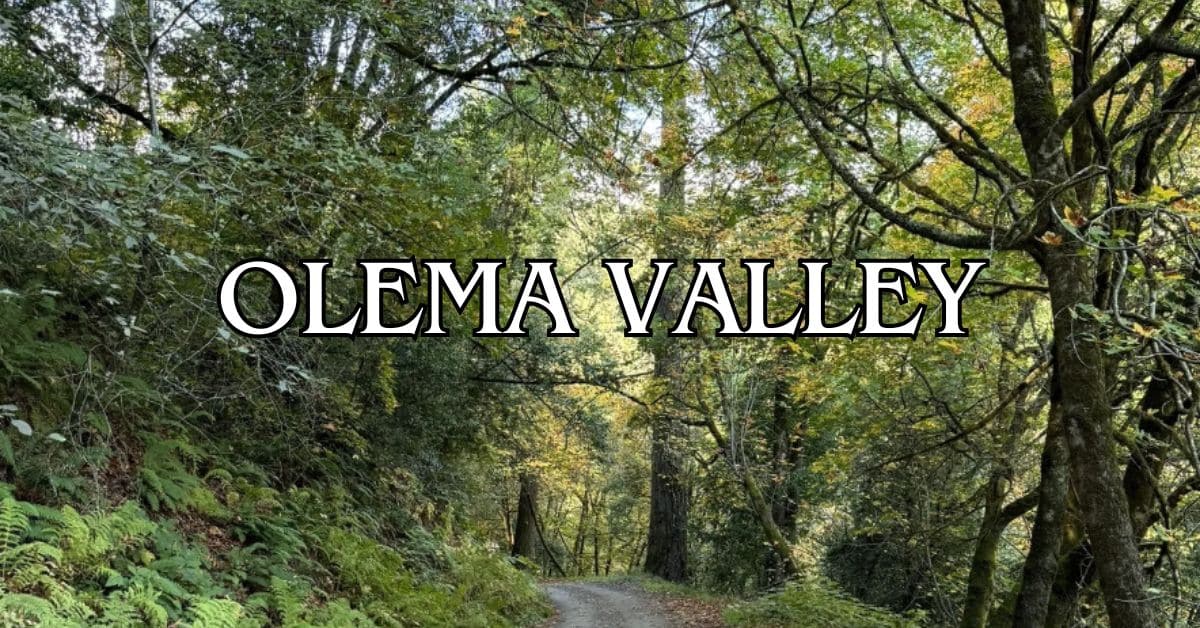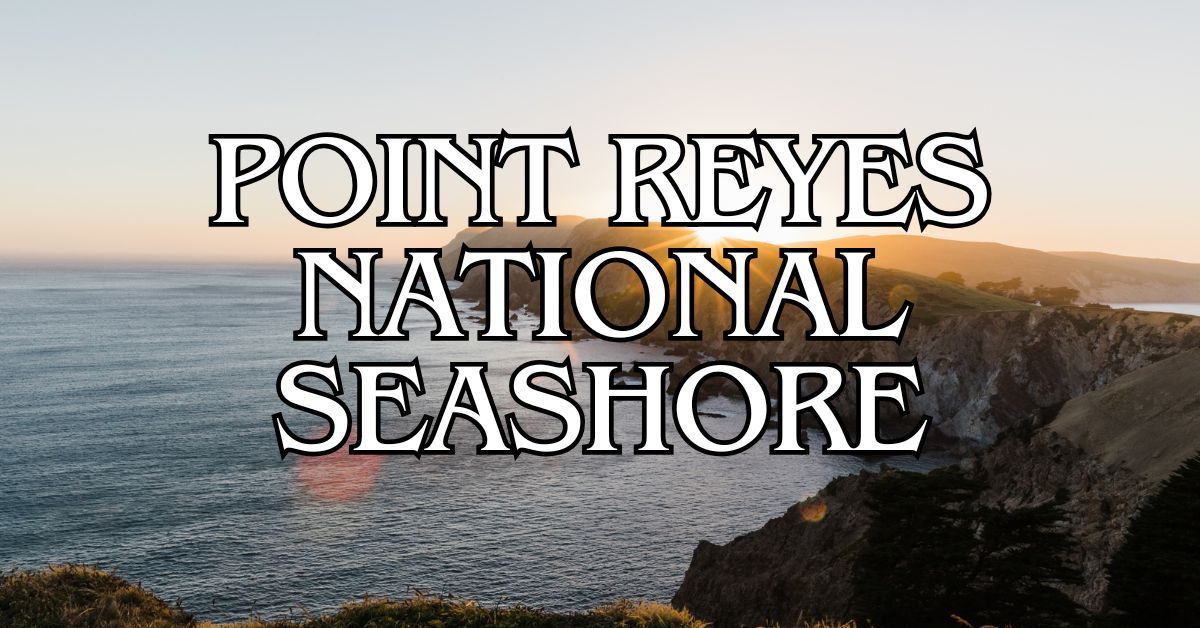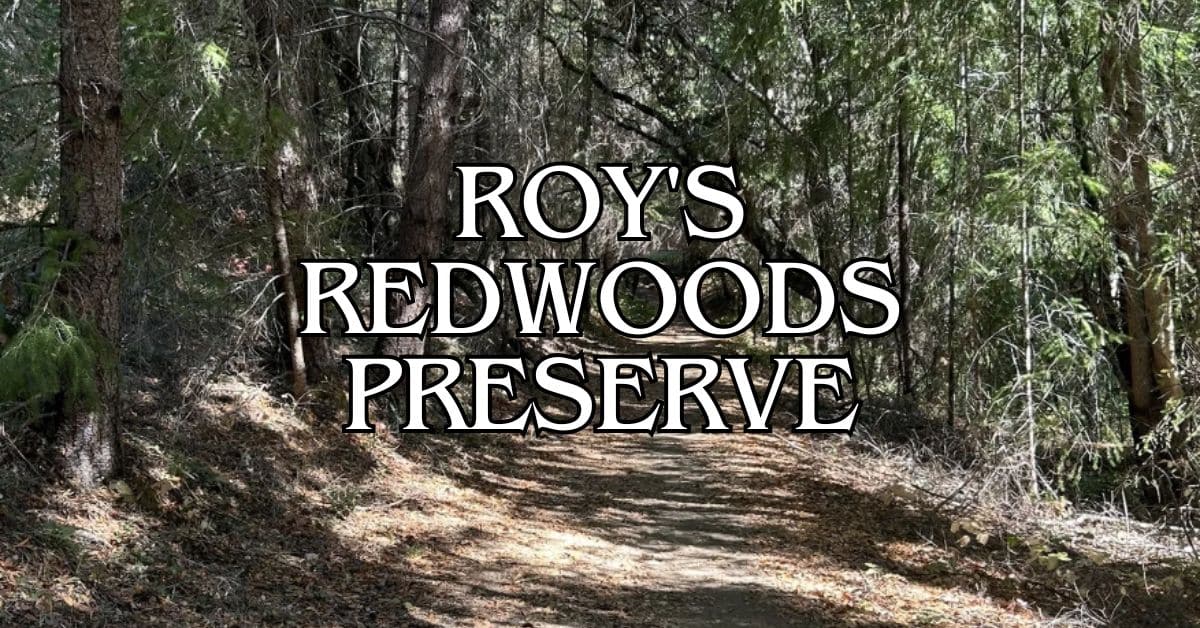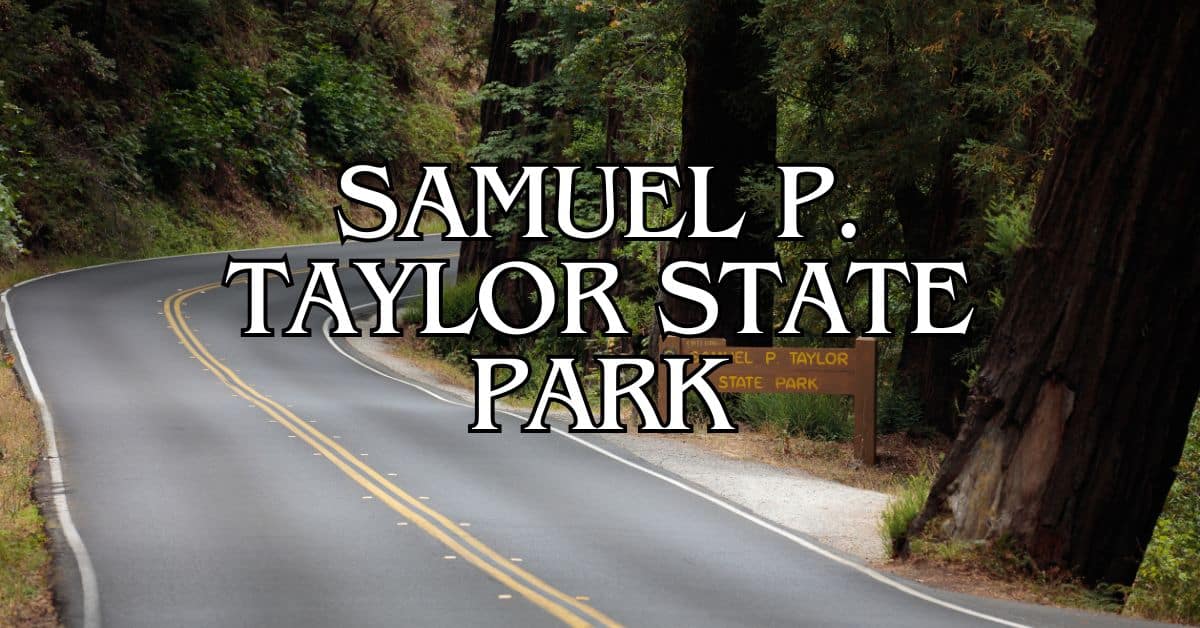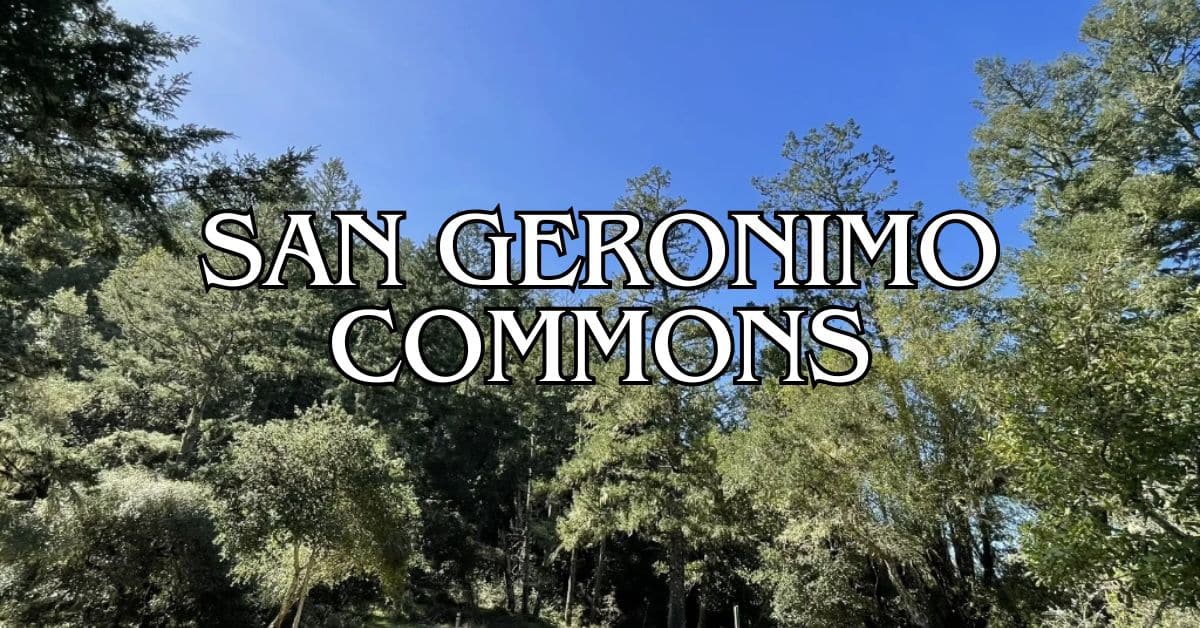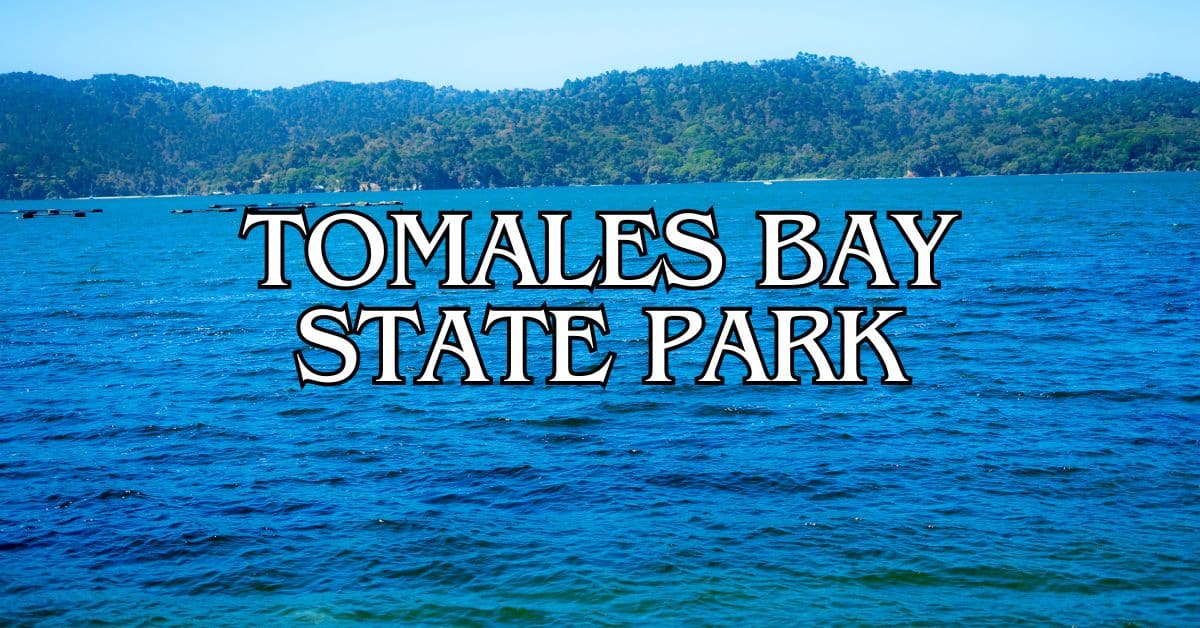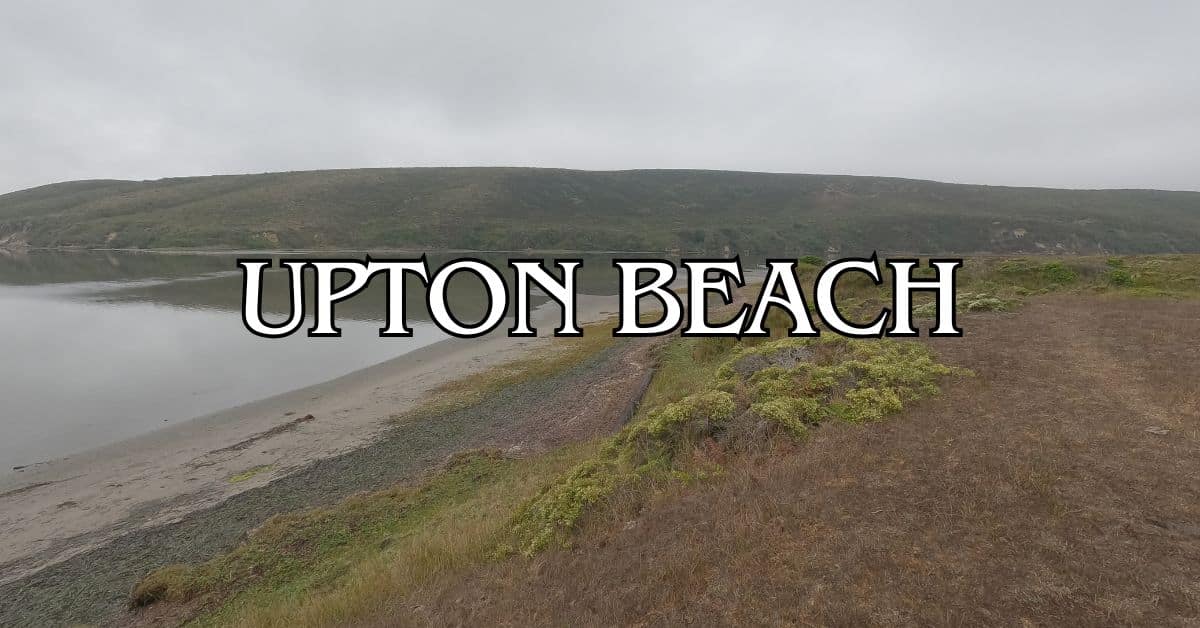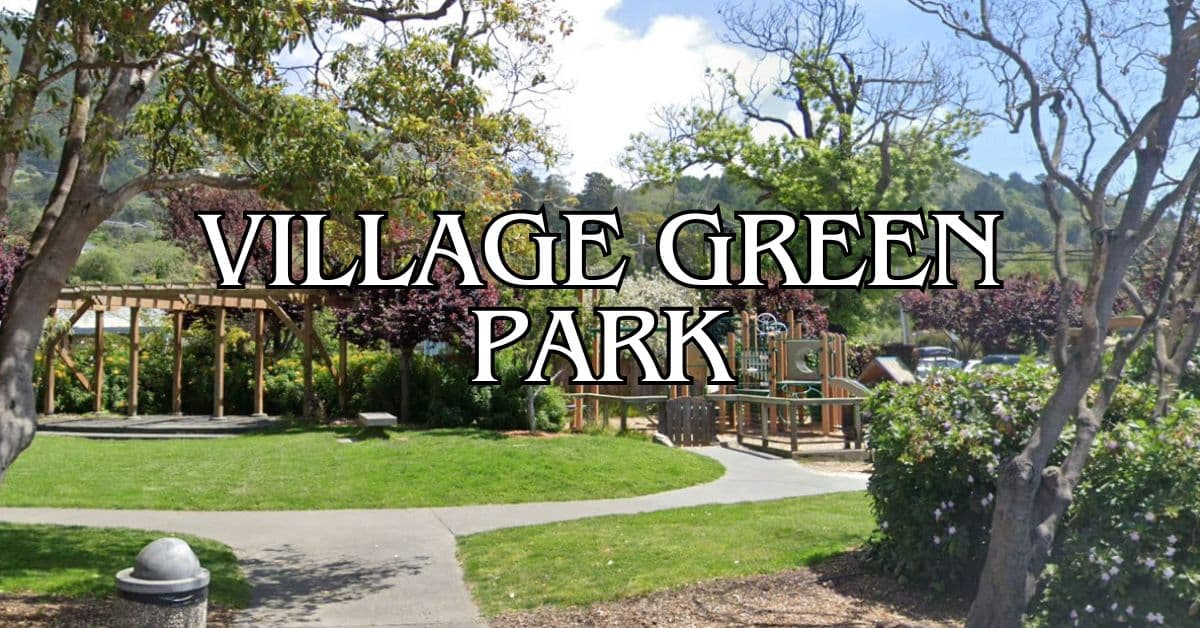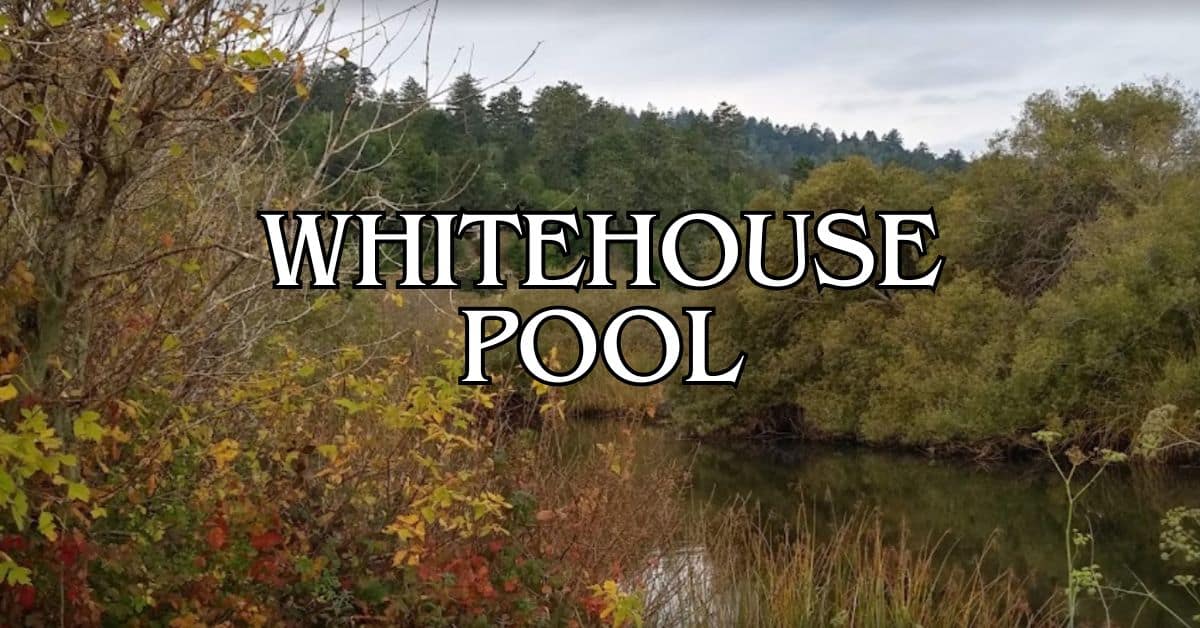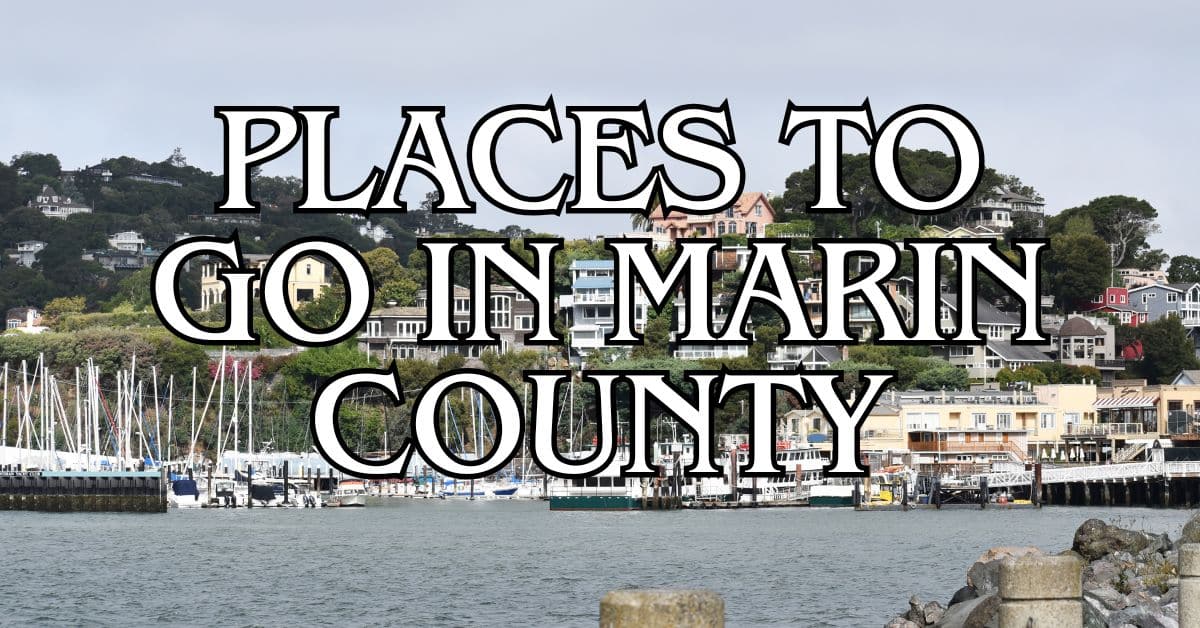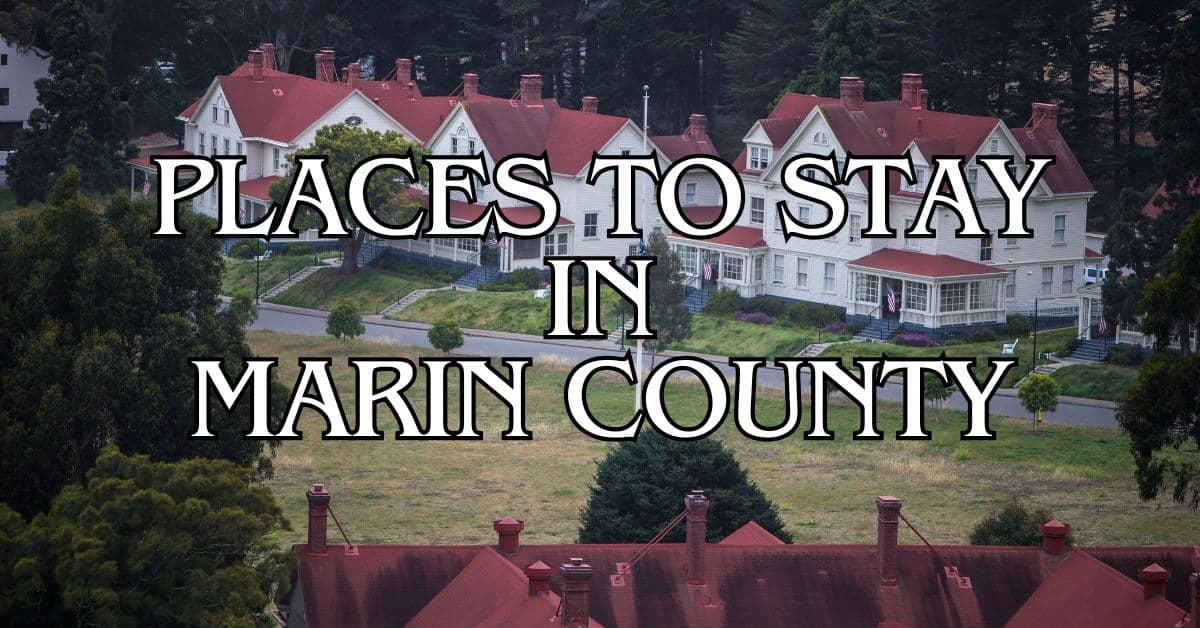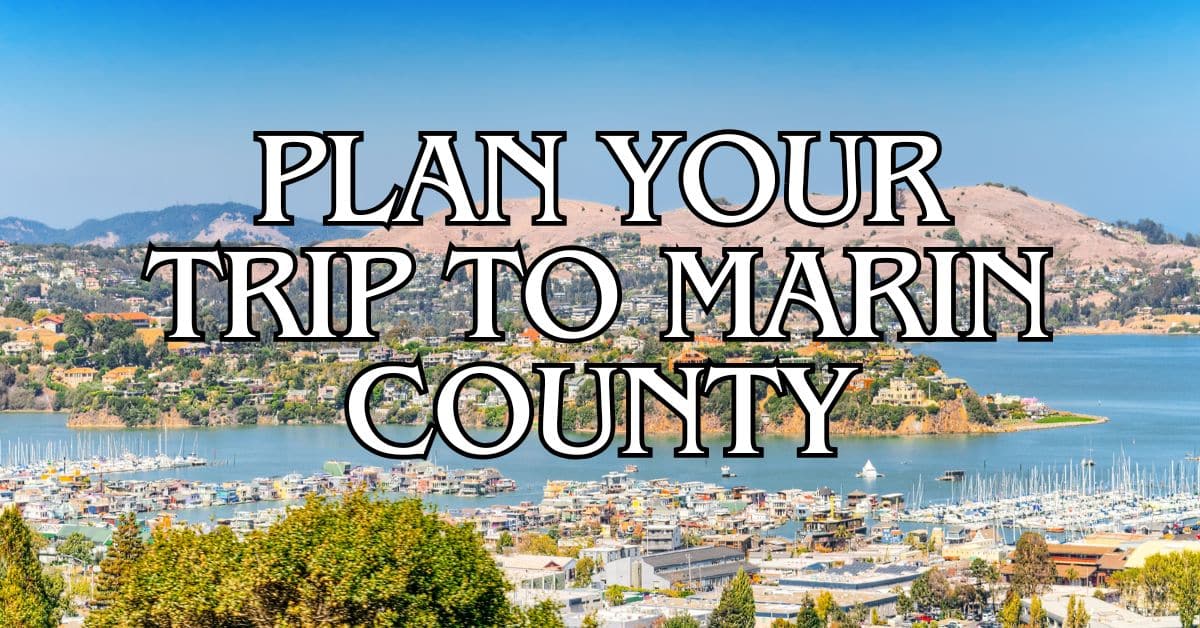Tucked between Point Reyes National Seashore and the rolling hills of Marin County, Olema Valley is a solid escape from city life. This rural stretch runs from Tomales Bay in the north to Bolinas Lagoon in the south, and it honestly feels like a different world compared to the nearby Bay Area. The pace slows down, and you start noticing things—morning fog drifting off the fields, cows grazing, the old ranch fences. It’s a mix of wild beauty and local flavor that’s hard to fake.
You’ll find plenty of outdoor adventure here, but also some comfortable spots to unwind. Hiking trails wind through grasslands, and the Tule Elk Preserve is worth a look if you want to see elk in their element. When you’re done exploring, there are cozy B&Bs and farm-style lodges waiting—nothing too fancy, but always welcoming.
Discover hand-picked hotels and vacation homes tailored for every traveler. Skip booking fees and secure your dream stay today with real-time availability!
Browse Accommodations Now
Olema Valley’s location gives you easy access to two beautiful bodies of water, but it never loses its rural charm. If you’re the type who likes to slow down and take in the details, you’ll appreciate the foggy mornings, the grazing cattle, and the deep-rooted history running through this part of Marin.
Overview of Olema Valley
Olema Valley stretches about 9 or 10 miles along the California coast. It’s got a bit of everything: natural beauty, some fascinating history, and a surprising amount of ecological diversity for such a quiet place. The land here has been shaped by both geology and people over time.
Geographic Location and Landscape
You’ll find Olema Valley in Marin County, California, tucked into the Golden Gate National Recreation Area. The valley runs parallel to Highway 1, creating a scenic corridor between Bolinas Ridge and Inverness Ridge. It starts at the small town of Olema in the north and ends at Bolinas Lagoon in the south.
Here’s something wild: the San Andreas Fault cuts right through Olema Valley. It’s literally split the landscape in two, with the Pacific Plate on one side and the North American Plate on the other.
The valley floor is mostly open pasture, with cattle grazing and the hills rolling up on either side. To the north, the land slopes down toward Tomales Bay. Olema Valley is also a natural jumping-off point for exploring both Point Reyes and the Marin coast.
Brief History of Olema Valley
This area was home to Coast Miwok people for thousands of years. Their presence is still felt—if you know where to look, you’ll find traces throughout the region.
In the 1800s, European settlers showed up and turned the valley into a hub for agriculture and dairy. You’ll still see historic ranches in operation, keeping up traditions that go way back.
Olema itself got busy in the late 19th century as a stagecoach stop and a railroad destination. It was never huge, but it mattered, especially for folks heading to Point Reyes or further north.
After the 1906 earthquake (which pretty much started here), people became a lot more aware of the valley’s connection to the San Andreas Fault. These days, the area preserves its natural landscape and history as protected parkland.
Distinctive Natural Features
Olema Valley is a showcase of California’s coastal ecosystems. The ridges are thick with Douglas fir, bishop pine, and coast redwood. Down in the valley, you’ll find meadows and grasslands.
Olema Creek winds its way through, creating riparian habitats that attract all sorts of wildlife. You might spot black-tailed deer, bobcats, coyotes, or catch a flash of wings from the many bird species that hang out here.
With Point Reyes National Seashore right next door, you’re never far from a beach or a dramatic coastal cliff. The Olema Valley Trail (7.5 miles, if you’re counting) is a good way to see a lot of these features in one go.
The landscape shifts with the seasons. Winter and spring bring green hills and wildflowers, while summer fog can turn the mornings into something out of a dream.
Getting to Olema Valley
Getting here isn’t complicated—there are several well-maintained routes that connect Olema Valley to the Bay Area. Its location in western Marin County makes it easy for both day trips and longer stays.
Main Driving Routes
California Highway 1 is the main road through Olema Valley. It runs right down the middle for about nine miles between Bolinas Ridge and Inverness Ridge. The drive is gorgeous but keep an eye out for curves and the occasional narrow stretch.
From the east, Sir Francis Drake Boulevard gets you here from central Marin. It hooks up with Highway 1 in Olema at the north end of the valley.
Coming from the north or south? US-101 is your main artery. You’ll need to exit and head west on connecting roads.
If you’re in the mood for a scenic approach, Panoramic Highway from southern Marin winds through Mount Tamalpais before linking up with Highway 1.
Access from San Francisco
Coming from San Francisco, you’ve got a couple of main routes:
- Golden Gate Bridge Route: Cross the bridge, head north on 101, then take Sir Francis Drake Boulevard west to Olema. With no traffic, it’s about an hour.
- Coastal Route: Take Highway 1 north through Mill Valley and Muir Beach. It’s the scenic option, with big ocean views—just expect it to take a bit longer (75-90 minutes, give or take).
On summer weekends or holidays, expect some traffic. Lots of folks are heading to Point Reyes or the coast, so plan accordingly.
Nearby Towns and Cities
Several Marin towns make great bases for exploring Olema Valley:
Point Reyes Station is just two miles north of Olema. It’s got shops, restaurants, and places to stay—a charming stop and a gateway to Point Reyes National Seashore.
San Rafael is Marin’s biggest city, 24 miles east. If you need more options for shopping or dining, this is your spot.
Mill Valley (20 miles southeast) offers a scenic drive through redwoods and past Mount Tam before you hit the valley.
Tiburon isn’t exactly on the way, but if you’re coming from the East Bay via the Richmond-San Rafael Bridge, it’s worth mentioning.
Other nearby towns like Fairfax, San Anselmo, and Bolinas each have their own personality—and might be worth a detour if you’re feeling curious.
Top Attractions in Olema Valley
Olema Valley’s got a bit of everything: natural wonders, historic sites, and some seriously charming small towns. There’s coastal beauty, redwood forests, and a rich local culture.
Point Reyes National Seashore
Point Reyes National Seashore is the star attraction here. This protected stretch covers 71,000 acres of beaches, cliffs, and all kinds of habitats. If you’re lucky, you’ll spot tule elk at the Tule Elk Preserve—one of the few places you can see these animals in the wild.
The Point Reyes Lighthouse is famous for its ocean views and whale watching during migration. Limantour Beach is a long, sandy stretch perfect for a walk or picnic.
Some hiking trails, like the Earthquake Trail, highlight the area’s spot on the San Andreas Fault. The Bear Valley Visitor Center is a solid place to start—rangers there can point you in the right direction and the exhibits are surprisingly interesting.
Redwood Forests and Scenic Spots
Five Brooks Stables offers guided horseback rides through shady redwoods and along scenic trails. It’s a great way to see the valley from a different perspective.
Samuel P. Taylor State Park is packed with towering redwoods and the peaceful Lagunitas Creek. If you’re here in spawning season, you might see endangered coho salmon. The park has camping and picnic spots under the trees.
The Bolinas Ridge Trail gives you sweeping views of the valley and the Pacific. On a clear day, you can see all the way to San Francisco.
Looking for something quieter? Bass Lake is a peaceful spot, reached by a moderate hike through mixed forest and coastal scrub.
Historic Towns and Cultural Sites
Olema is a small town with a long history. The Olema Farmhouse dates to the 1860s, and the place still feels like a gateway to Point Reyes.
Point Reyes Station has a lively town center with the famous Cowgirl Creamery, local shops, and galleries. The farmers market is a good stop for fresh produce and regional snacks.
In Inverness, check out the shipwrecked Point Reyes boat—a favorite for photographers. The shops and restaurants here are small but full of character.
Tomales is known for its Victorian buildings and the historic St. Teresa of Avila Church (built in 1860). The bakery there is a local legend—don’t miss the bread or pastries if you swing through.
Outdoor Activities and Recreation
Olema Valley is a playground for anyone who loves the outdoors. Its unique spot between Point Reyes and the Golden Gate parks means you can find something to do year-round.
Hiking and Biking Trails
Bolinas Ridge Trail is a top pick for hikers and mountain bikers. The trail rolls through coastal hills, into redwood groves, and out to open chaparral. The scenery changes constantly, which keeps things interesting.
The Five Brooks area offers access to over 120 miles of trails for all skill levels. For something easy, try Bear Valley Trail—it’s mostly flat with lovely forest views. If you want a challenge, the Coastal Trail delivers big ocean vistas.
Mountain bikers should check out the northern Bolinas Ridge trails—these are wider and more bike-friendly. Just make sure to check which trails are hike-only, since some are off-limits to bikes to protect the ecosystem.
Camping Experiences
Samuel P. Taylor State Park has developed campsites right among the redwoods along Lagunitas Creek. You get fire rings, picnic tables, and restrooms nearby. If you’re coming in summer, book ahead—it fills up fast.
If you’re after more solitude, try backcountry camping at Point Reyes National Seashore. Coast Camp and Sky Camp each offer something different—beach views or ridge-top panoramas.
One tip: store your food properly. Bears are rare, but raccoons and other critters are determined. And during dry spells, campfires might be restricted, so check the latest rules before you head out.
Scenic Drives and Lookouts
Sir Francis Drake Boulevard cuts through the valley and is a great way to take in the scenery. The drive links Point Reyes Station with inland towns, winding through forests and meadows.
Find the perfect hotel or vacation rental. Instant booking, no fees!
View Top Stays
Stop at the Olema Valley Overlook for a wide view of the valley framed by coastal mountains. Spring is especially nice—wildflowers pop up everywhere and the fog can make the place look almost magical.
For classic coastal views, take Mesa Road to Bolinas. The cliffside pullouts give you a front-row seat to the ocean crashing against the land. Early morning or late afternoon is the best time for drives—the light is just right.
If you’re here between January and April, bring binoculars. You might spot gray whales from the coastal lookouts.
Nature and Wildlife
Olema Valley is a little paradise in Marin County where different ecosystems meet. Wildlife thrives here—forest, coast, and wetlands all come together, making this spot a haven for all kinds of species.
Beaches and Coastal Landscapes
Point Reyes Beach runs for almost 12 miles along the western edge of Olema Valley. Here, dramatic cliffs and crashing waves carve out a wild, ever-changing coastline. The beach splits into North and South sections, each with its own vibe.
Stinson Beach anchors the southern end. Its wide, golden sands attract swimmers and sunbathers, especially in summer. The water here tends to be a bit warmer than at other local beaches—nice if you’re not a fan of icy toes.
Keep an eye out for harbor seals lounging on offshore rocks, or shorebirds poking around for their next meal. In winter, you might even catch gray whales making their migration past these shores.
The cliffs above host nesting seabirds—cormorants, gulls, the usual suspects. If you wander near Bolinas at low tide, check out the tidepools. Starfish, anemones, and all sorts of weird little marine critters show up if you look closely.
Lagoons, Bays, and Marine Life
Bolinas Lagoon is a 1,100-acre tidal estuary that’s become a haven for birds and marine life. Great blue herons, egrets, and over 60 species of waterbirds call it home. It’s even listed as a wetland of international importance—pretty cool.
Tomales Bay runs along the valley’s northern stretch. Locals know it for oyster farms and those glowing bioluminescent waters on summer nights—seriously, the water lights up.
Wildlife here includes:
- Harbor seals
- Bat rays
- Leopard sharks
- River otters
Kayaking on Tomales Bay can get you up close to all sorts of creatures. Tomales Bay State Park has launch spots and trails if you want to explore by boat or on foot.
Redwood Forest Ecosystems
On the eastern slopes, redwoods tower overhead, creating a moody, magical forest. Some of these trees have been around for over 2,000 years and reach higher than a 30-story building.
Muir Woods National Monument protects an old-growth redwood forest just a short drive away. Walking among these giants is quieting, almost surreal. You might spot a northern spotted owl or a deer if you’re lucky.
Look down and you’ll find:
- Sword ferns
- Trillium
- Banana slugs
- Woodpeckers
- Douglas squirrels
These forests soak up fog from the coast, making their own microclimate. That means plants grow here that you won’t see elsewhere. Creeks crisscross the woods, sheltering steelhead trout and California giant salamanders.
Where to Stay in Olema Valley
You’ll find plenty of lodging options in Olema Valley, whether you’re after a cozy B&B or just want to pitch a tent. There’s something for most budgets and travel styles.
Bed and Breakfasts and Inns
Roundstone Farm Bed and Breakfast Inn is a local favorite. It’s got that warm, homey feel B&Bs are known for, with homemade breakfasts and rooms that reflect the area’s character.
A handful of historic inns dot the valley, many in lovingly restored old buildings. Expect gardens, fireplaces in the common areas, and hosts happy to share their favorite local spots.
The best part? Olema’s B&Bs put you right next to nature, but you don’t have to give up comfort. Most are just a short walk or drive from trails and wildlife watching. Nightly rates usually run $150-$350, depending on the season.
Camping Grounds
Olema Campground is a solid pick if you’d rather sleep under the stars. It’s got both tent sites and RV hookups, all tucked into the woods. You’ll find basics like restrooms, showers, and picnic tables.
It’s an easy base for exploring Point Reyes National Seashore—trailheads and wildlife viewing spots are nearby. Definitely book ahead if you’re coming in summer or on weekends.
If you’re after something wilder, backcountry camping is possible in the national parklands. You’ll need a permit, but you’ll get a more secluded experience. Expect to pay $25-$45 per night, depending on what you need and the time of year.
Hotels and Vacation Rentals
Olema House is the top hotel in the valley. It’s a 24-room boutique property that keeps its historic architecture but adds modern comfort. Makes a great base for exploring.
Bear Valley Cottage and Olema Cottages offer private vacation rentals. These spots give you more space and independence—kitchens, living rooms, maybe a yard.
Vacation rentals are a good deal for families or longer stays. Options range from snug cabins to big family homes. You get a taste of local life and easy access to the outdoors. Prices are all over the map, from $200 to $500+ a night, depending on size and season.
Dining and Local Cuisine
Olema Valley and Marin County deliver when it comes to food—think fresh seafood, local produce, and chefs who actually care about what’s in season. The region’s food scene really pulls from the land and the sea.
Best Restaurants and Cafés
Sir and Star in Olema is probably the fanciest spot around. The vibe is elegant but not stuffy, and the menu leans into local, seasonal ingredients.
Due West, also in Olema, is more casual. They do comfort food with a California spin—nothing too fussy, just good.
If you swing by Point Reyes Station, check out Side Street Kitchen for their rotisserie chicken and filling sides. It’s a small place and gets packed, so timing helps.
For breakfast or a chill lunch, Stillwater in Fairfax is a good bet. Creative California fare, relaxed setting, and a nice outdoor patio for coffee and pastries or a midday bite.
Local Oysters and Seafood
Tomales Bay is famous for oysters, and Hog Island Oyster Company is the go-to. You can slurp fresh oysters right by the bay where they’re grown. Pack a picnic or order one of their seafood platters.
Coastal towns near Olema are all about fresh seafood. In Bolinas, you’ll find little spots serving just-caught fish and shellfish, usually prepared simply to let the flavors shine.
Seafood festivals pop up throughout the year. Local restaurants get in on the action with special menus—Dungeness crab, rock cod, halibut, you name it.
Farm-to-Table and Organic Options
Marin County’s farm-to-table scene is legit. Many places have maps showing which local farms grew your veggies or raised your meat.
Sol Food, in San Rafael and Mill Valley, serves Puerto Rican dishes with organic ingredients. Their food pops with flavor and color, and they use a lot of local produce.
Farmers’ markets are everywhere. You can buy direct from producers, and some B&Bs even organize food festivals with regional specialties.
If you want something unique, look for seasonal farm dinners. These multi-course meals showcase whatever’s fresh, paired with local wines or craft drinks.
Exploring Neighboring Areas
Olema Valley sits in the middle of West Marin’s unique destinations. Each little town has its own personality, but they’re all tied together by gorgeous scenery and a laid-back, small-town feel.
West Marin and Coastal Villages
West Marin is a patchwork of tiny communities along Highway 1 and the Point Reyes Peninsula. It’s rural—rolling hills, dairy farms, lots of open space.
The coastal villages are a world apart from the rest of Marin. Many have fewer than 1,000 people. There’s not much commercial development; agriculture and tourism keep things humming.
If you’re driving through, stop at the farm stands. Local cheese, produce, flowers—they’re worth a detour. The dairy farms here make some award-winning cheeses.
Cell service is spotty, so download your maps before you go. Services are limited in most villages, so plan ahead.
Point Reyes Station and Inverness
Point Reyes Station is the main hub. With about 850 residents, it’s got a handful of restaurants, bakeries, and shops. Toby’s Feed Barn is a quirky combo of general store, café, and community center.
On Saturdays, the farmers market buzzes with local producers and visitors. Art galleries show off work by regional artists inspired by the landscape.
Inverness, just north along Tomales Bay, is quieter. It’s the place to rent a boat or kayak and get out on the bay.
The Inverness Store is handy for picnic stuff, and Ship’s Valley Store—dating back to 1890—is a local landmark. Both towns make solid bases for exploring Point Reyes National Seashore.
Bolinas, Tomales, and Marshall
Bolinas is famously hard to find—locals keep taking down road signs to their artsy coastal town. There’s a public beach with mellow waves, good for beginner surfers.
Luxury stays to cozy cottages await, all with instant booking. Find the best deals!
Browse Marin Stays
The Bolinas Museum is worth a stop for local history and changing exhibits. The town’s environmental focus has kept it unique.
Tomales is a tiny inland village anchored by its historic church and a handful of businesses. William Tell House claims to be California’s oldest saloon and serves up local seafood and drinks.
Marshall hugs Tomales Bay’s eastern shore—a string of buildings focused on oysters. Try Hog Island Oyster Company or The Marshall Store for super fresh shellfish.
Life moves slower in these towns. Many spots close midweek or during the off-season, so check hours before heading out.
Must-See Parks and Natural Reserves
Marin County has plenty of breathtaking natural areas. Whether you’re after ocean views or redwood shade, you’ll find a park that fits.
Golden Gate National Recreation Area
This massive park system includes Olema Valley, a nine-mile stretch of rural landscape between Point Reyes National Seashore and the Golden Gate Parks.
The Bolinas Ridge Trail is a favorite—it starts in grassy hills, winds through redwoods, and pops out into chaparral with killer views.
People come here to hike, bike, and spot wildlife. The mix of habitats means you’re bound to see something interesting.
Being close to other attractions, Olema Valley works well as a base. You can hit the beach or the trails without much driving.
Samuel P. Taylor State Park
Samuel P. Taylor State Park is a cool retreat with old redwoods and Papermill Creek. It’s just 15 minutes east of Olema Valley—easy to add to your plans.
The park has trails for all levels. Devil’s Gulch Trail is a moderate hike through redwoods, while South Creek Trail is a gentler walk along the water.
Camping here is popular, with standard and hike-in sites. You’ll find picnic tables, fire rings, and clean restrooms with showers.
Cyclists love the paved Cross Marin Trail, which follows an old railroad grade. It’s flat and family-friendly, great for an easy ride.
Regional State Parks
North Coast State Parks near Olema Valley open up even more ways to soak in Marin’s wild side. These parks have a different vibe—think less redwoods, more open spaces and rugged coast.
Mount Tamalpais State Park is Marin’s iconic mountain, rising above the county with sweeping views all the way to San Francisco and the East Bay. You’ll find more than 60 miles of trails winding through grasslands and forests—plenty for hikers of all stripes.
Muir Beach and Stinson Beach put you right on the Pacific, with sandy stretches that are perfect for flopping down after a long walk. At low tide, the tide pools here are full of weird and wonderful marine life—always worth poking around if you’re curious.
Tomales Bay State Park brings quieter beaches and upland trails. The calm bay is great for beginner kayakers, and in springtime the hills just explode with wildflowers.
Planning Your Visit
A good trip to Olema Valley takes a bit of planning. The right timing and a heads-up about what to expect can make all the difference in this place where rolling hills meet the ocean.
Best Times to Visit Olema Valley
Late spring through early fall (May to October) is prime time for Olema Valley. You’ll get mild weather and usually dodge most of the rain.
September and October are especially nice—warm, clear, and just right for hitting the trails or wandering the coast. If you can swing a weekday visit, go for it. Tuesday through Thursday is way quieter than the weekend rush from San Francisco.
Wildflower fans, take note: April and May are your months. The blooms across the valley and ridges are something else. In fall, the leaves along Bolinas Ridge put on a pretty good show too.
Winter (November-March) brings a different feel. The crowds thin out and the hills turn a lush, almost unreal green after the rains.
Weather and Local Climate
Olema Valley sits in a coastal Mediterranean climate, which basically means dry summers and wet winters.
Average temps:
- Summer: 50-75°F (10-24°C)
- Winter: 40-60°F (4-16°C)
Fog is a regular guest, especially on summer mornings. Usually it burns off by lunch, but honestly, bring layers no matter what the forecast says.
It can get pretty windy up on the ridges and near the coast. Even on a warm day, you might be glad you packed a windbreaker.
The valley has its own microclimates. The eastern side is usually warmer and drier, while spots closer to the coast stay cooler and damper.
Seasonal Highlights and Events
Spring (March-May) Wildflowers like iris, lupine, and poppies light up the hills and valley floor. It’s also a great time for birdwatching—migratory species start showing up again.
The Point Reyes Birding Festival in April is a big deal for birders, with guided walks through the valley.
Summer (June-August) Saturday farmers markets in Point Reyes Station are loaded with local produce—perfect for picnic supplies before you hit the trails.
Hiking and biking conditions are at their best, with well-marked trails along the coast.
Fall (September-November) Harvest festivals pop up all over, celebrating the area’s farms. If you’re around in October, the Tomales Bay Oyster Festival is a local favorite.
September kicks off elk rutting season at Tule Elk Preserve nearby—a rare chance to see this wildlife spectacle on the North Coast.
Winter (December-February) Gray whale migration peaks, and the best place to watch is at the Point Reyes Lighthouse. Bring binoculars and patience.
Travel Tips and Practical Information
A little prep goes a long way in Olema Valley. Here’s what you’ll want to know to get around, stay safe, and actually enjoy your time out here.
Getting Around the Valley
Olema Valley runs for about nine miles, and public transit is pretty limited. You’ll want your own car to really explore. Main trailheads have parking, but spots fill up fast on weekends and holidays.
Prefer to go car-free? You could:
- Rent a bike in Point Reyes Station
- Try rideshare apps (though service is spotty)
- Look for shuttles (these run during peak season, but check ahead)
The roads are mostly two-lane and twisty, with some blind curves. Take it slow, especially if it’s foggy—which it often is in the mornings.
Weekdays mean less traffic and easier parking. If you’re coming on a weekend, get there before 10am if you want a parking spot at the popular trailheads.
Essential Services and Safety
Cell coverage is unreliable in much of Olema Valley. Download your maps and trail info before you set out.
Emergency contacts:
- Park Rangers: 415-464-5100
- Emergency: 911 (but expect longer response times in remote spots)
Closest medical help is in Point Reyes Station and Olema:
- West Marin Medical Center (basic care)
- For serious stuff, Marin General Hospital is about half an hour away
Weather can turn on a dime. Fog can roll in fast, especially on summer afternoons. Always check the forecast before you head out.
Bring more water than you think you’ll need, especially on the steeper parts of the Olema Valley Trail. Dehydration sneaks up on people, even near the coast.
Packing Essentials
The microclimate here means you’ll want to dress in layers, no matter the season. Mornings can be cold and foggy, then suddenly you’re sweating by midday.
Must-haves:
- Layered clothes (temps can swing 15°F easily)
- Wind/waterproof jacket
- Good hiking shoes with grip
- Sunscreen (don’t skip it, even if it’s foggy)
- Reusable water bottle
- Binoculars for spotting wildlife
- Paper map (your phone might not work)
Bring trail snacks—there aren’t many food options once you’re in the valley. Pack a bit extra just in case your hike runs long.
A small first aid kit with blister pads is a good idea, especially if you’re aiming for the tougher trails.
Popular Itineraries
Olema Valley can fit almost any kind of trip, whether you’ve got a single day or a whole weekend. Its wild beauty and proximity to both Point Reyes National Seashore and Golden Gate National Parks make it easy to mix and match adventures.
Day Trip Highlights
Kick things off at Bear Valley Visitor Center. Grab trail maps and ask the rangers for their latest tips. It’s also a great intro to the region’s history, especially with the San Andreas Fault running right through.
Next, stroll the Earthquake Trail—a quick 0.6-mile loop that shows off what the 1906 quake did to the land. The signs are actually interesting, and you’ll be done in about half an hour.
For lunch, head to the picnic spots by Olema Creek. Shady tables, clean bathrooms, and just five minutes from Point Reyes Station’s delis if you want to grab food beforehand.
In the afternoon, drive the Olema Valley Trail Road. It’s a gorgeous nine-mile stretch with classic views of pastures and rolling hills. Pull over for photos—cows, barns, open sky.
Weekend Getaway Suggestions
Friday Evening: Check into a place in Olema or Point Reyes Station. Olema House is cozy and has nice valley views. For dinner, Farm House Restaurant serves up fresh local food.
Saturday: Morning: Hike Bolinas Ridge Trail for sweeping views of the valley. It’s a moderate six-mile walk, mostly flat since it follows an old railroad grade.
Afternoon: Head into Point Reyes National Seashore. The lighthouse (open Friday-Monday) is iconic, and Drakes Beach is always worth a wander. The drive itself is a treat.
Evening: Grab dinner at Sir and Star in Olema—expect creative, hyper-local dishes that change with the seasons.
Sunday: Morning: Join a guided nature walk with park rangers (double-check the schedule at the visitor center).
Afternoon: Swing by the Olema Valley Organic Farm stands for some produce before you hit the road home.
Family-Friendly Activities
The Bear Valley Nature Trail winds along an easy, 0.6-mile paved path—great for strollers and little feet. If you swing by the visitor center first, the interactive exhibits are a hit with curious kids (and maybe some grown-ups too).
Picnic spots pop up all over Olema Valley, offering safe places to plop down for lunch. Around Five Brooks, you’ll find tables, restrooms, and open space where children can burn off energy without worry.
If you’re around in spring, Olema Marsh is a sweet spot for birdwatching and wildlife sightings. Binoculars come in handy, and wildlife cards can turn the whole thing into a fun little game. The wooden observation platform is easy for everyone to reach, so no one gets left out.
On those drizzly days, the Point Reyes Library over in Point Reyes Station comes to the rescue with children’s reading hours on Saturday mornings. They usually pick stories about local critters or the area’s history—pretty charming, honestly.
And hey, bring jackets, even if it’s summer. The valley’s weather can flip from sunny to chilly fog before you know it.
Find available hotels and vacation homes instantly. No fees, best rates guaranteed!
Check Availability Now
Bolinas Lagoon Preserve Travel Guide – Accessibility, Amenities, Activities, and More!
Bolinas Park Travel Guide – Accessibility, Amenities, Activities, and More!
Dias Ridge Travel Guide – Accessibility, Amenities, Activities, and More!
Forest Knolls Park Travel Guide – Accessibility, Amenities, Activities, and More!
French Ranch Preserve Travel Guide – Accessibility, Amenities, Activities, and More!
Gary Giacomini Preserve Travel Guide – Accessibility, Amenities, Activities, and More!
Lagunitas Skatepark Travel Guide – Accessibility, Amenities, Activities, and More!
Martinelli Ranch Travel Guide – Accessibility, Amenities, Activities, and More!
Maurice Thorner Preserve Travel Guide – Accessibility, Amenities, Activities, and More!
Miller Boat Launch Travel Guide – Accessibility, Amenities, Activities, and More!
Olema Valley Travel Guide – Accessibility, Amenities, Activities, and More!
Point Reyes National Seashore Travel Guide – Accessibility, Amenities, Activities, and More!
Rocky Point Travel Guide – Accessibility, Amenities, Activities, and More!
Roy’s Redwoods Preserve Travel Guide – Accessibility, Amenities, Activities, and More!
Samuel P. Taylor State Park Travel Guide – Accessibility, Amenities, Activities, and More!
San Geronimo Commons Travel Guide – Accessibility, Amenities, Activities, and More!
Tomales Bay State Park Travel Guide – Accessibility, Amenities, Activities, and More!
Upton Beach Travel Guide – Accessibility, Amenities, Activities, and More!
Village Green Park Travel Guide – Accessibility, Amenities, Activities, and More!
Whitehouse Pool Park Travel Guide – Accessibility, Amenities, Activities, and More!


